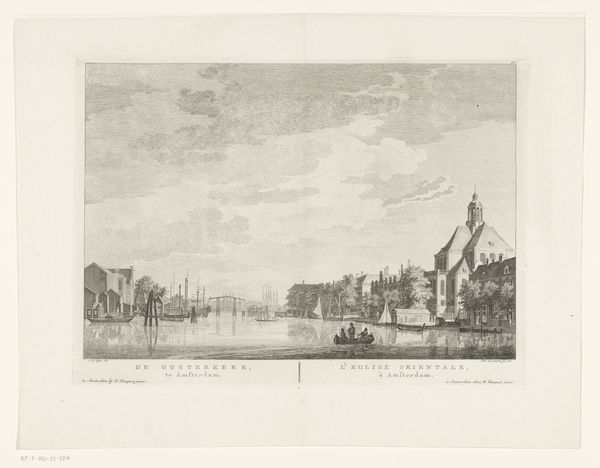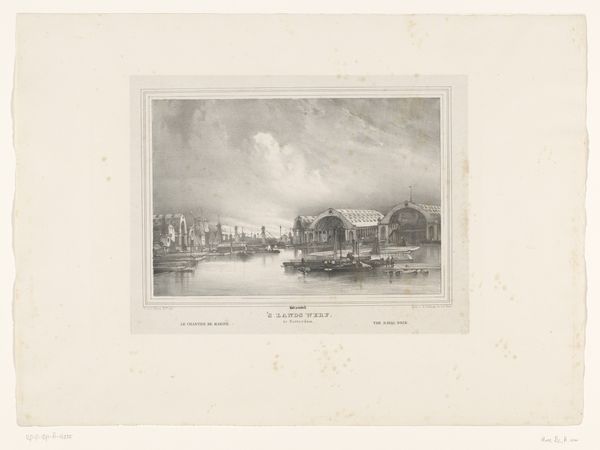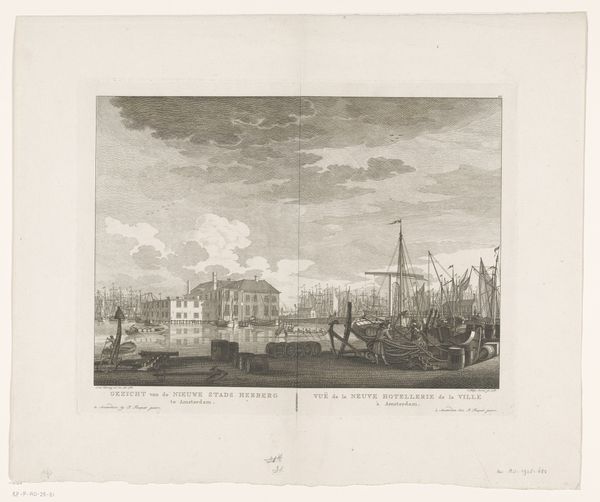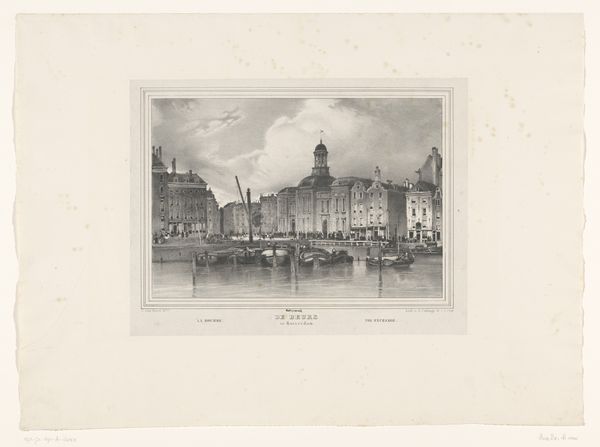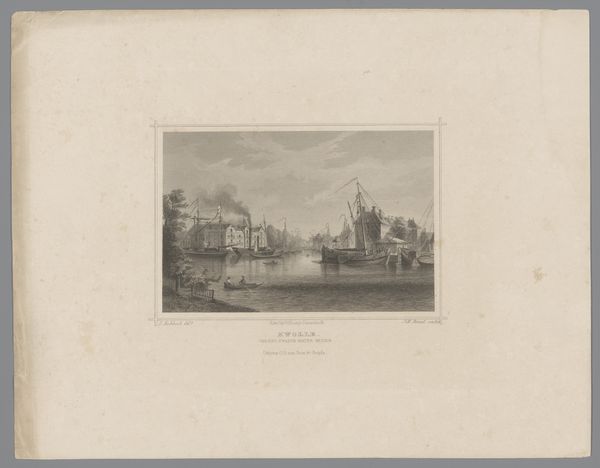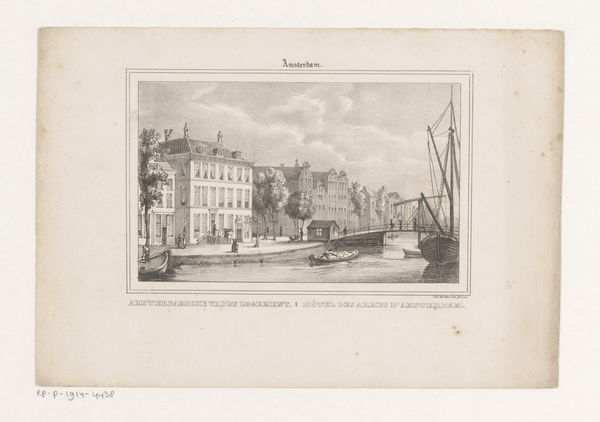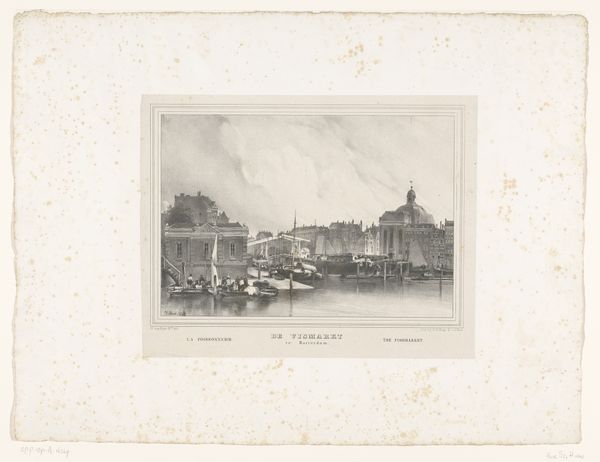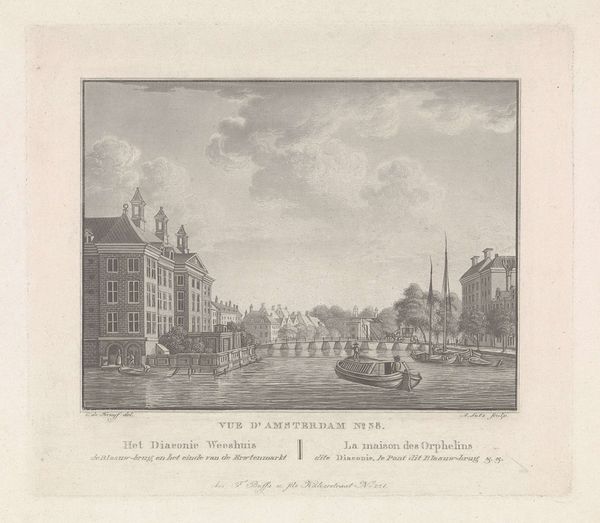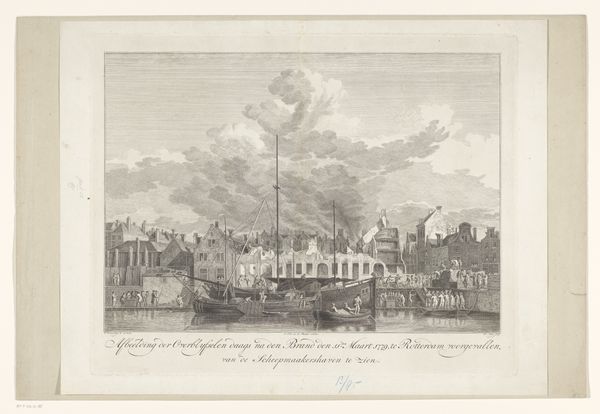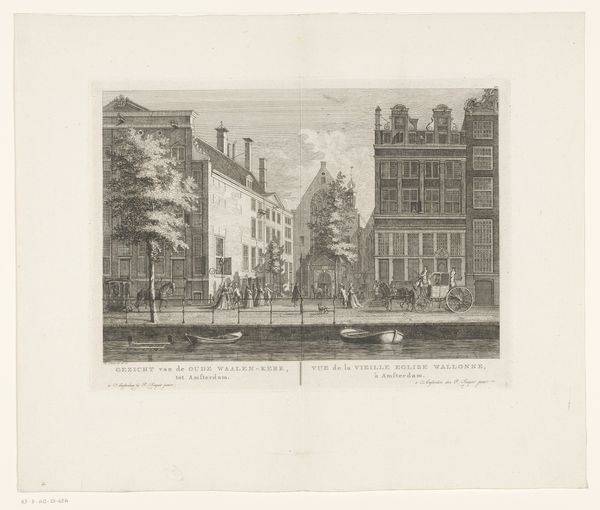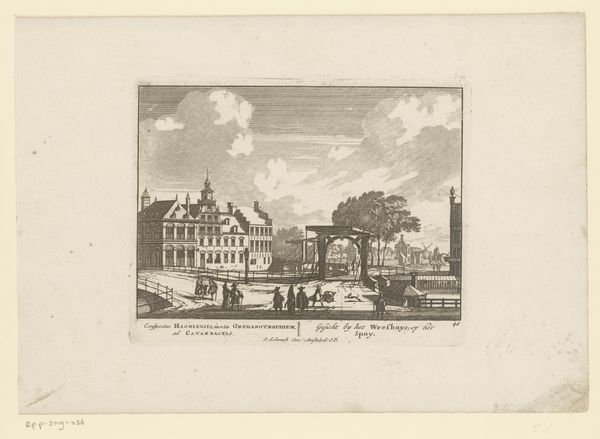
print, engraving
# print
#
romanticism
#
cityscape
#
engraving
Dimensions: height 159 mm, width 200 mm
Copyright: Rijks Museum: Open Domain
Curator: Here we have Willem Writs’ engraving, “View of the Kloveniersdoelen and the Weighing House in Amsterdam,” created in 1804. Editor: It's a remarkably crisp rendering. There's a strong sense of light playing across the water and buildings, quite serene, despite all the detail packed into this scene. Curator: Writs captures the Dutch Golden Age in decline through a lens of emerging Romanticism. We see not just the architecture, but also the societal shifts happening with the rise of individual experience during the period of political transformation across Europe. Editor: I'm drawn to the intricate lines. Considering this is an engraving, the process itself is laborious. One can imagine Writs carefully etching each line, translating the urban landscape through a mediation of metal and tool. This really speaks to the value placed on detailed observation, but also on artisanal skill in portraying the city. Curator: Exactly. The Kloveniersdoelen, once a military compound, transforms into a site for civic celebrations, a potent symbol of shifting power structures. And, crucially, access to this view would've been largely limited based on socio-economic privilege. Writs is indirectly commenting on this inherent inequality through his detailed choices in what aspects of the landscape he includes, and from what position the image is observed. Editor: And the Weighing House. Weighing and measuring were fundamental to the city's mercantile activities; what a social equalizer when everyone's business ran through it! In terms of the visual, I find myself thinking about distribution of materials, the paper itself and the access to it during those years and in the present. Curator: This wasn’t mass media, absolutely. Its relative scarcity frames its initial and continued role as a precious and impactful historical source. Editor: This reminds me that artwork is, in itself, material evidence and its meaning is always linked to a web of people, instruments, resources, time. Curator: Indeed. It prompts us to contemplate both the enduring legacies of Amsterdam's mercantile past and the evolving ways we, today, seek to construct new cultural and social identities, even 200 years later.
Comments
No comments
Be the first to comment and join the conversation on the ultimate creative platform.
